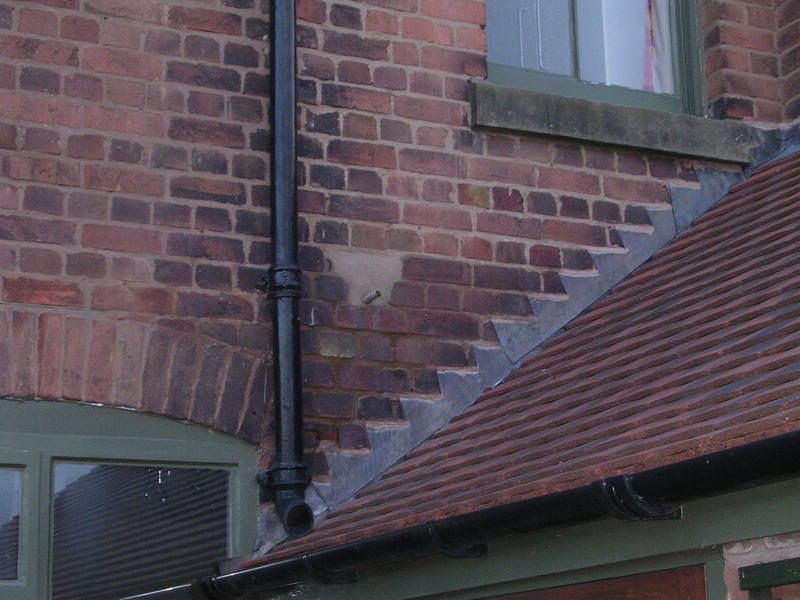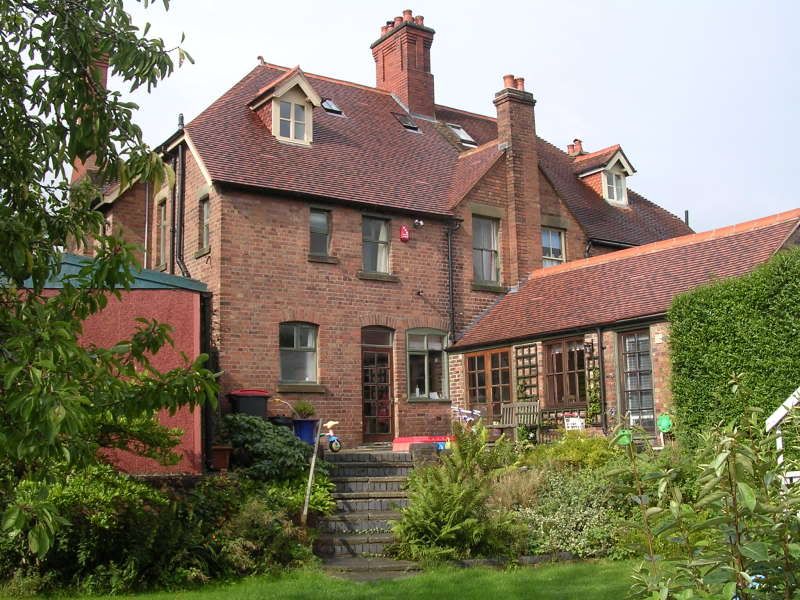Feltwell
Member
- Messages
- 6,377
- Location
- Shropshire, England
Can the collective PPUK brains offer their opinions on this one please....
We'd noticed that in our kitchen in the last week or so a damp area on one wall has been getting much more noticeable. As this area is directly beneath where I know a lot of heating and water pipes run, I presumed I'd got a leak. Picture is below (after I'd had a little exploratory take off of plaster around some heating pipes to see if they were the culprit - they weren't)

So, I took the floorboards up in the room above this morning, and found everything to be bone dry - definitely no leaks from a pipe above.
The outside of this wall has a single storey roof butting up against it, as in the picture below. The roof is only 2 years old, I took some tiles off today to double check and the flashing and soakers all appear to be fine. The roofing membrane is correctly tucked up behind the flashing. The top centre of the damp patch is a good foot above the roof line anyway, so it's unlikely to be a fault there I think.
The outside wall is clearly damp. It looks in the picture below as if the area behind the downpipe is damp - I don't believe it is, I think that's old staining of the bricks. The room behind the downpipe has no damp in that wall and the downpipe appears to be working fine, I tested it with a hosepipe.
But you can see a patch (coming up to a level with the top of the horrible cement patch around the overflow pipe) that looks darker and is damp, I'm sure.

So I took all the plaster off the inside to expose the brick and let it dry - this is the most messed about with section of the whole house, it has gypsum plaster painted with modern emulsion on the inside, cement pointing on the outside, and has generally been b**ggered about with - original window gone and a new cheap one bodged in, internal doorway widened, nasty plastic guttering put up, etc.

You can see the darker damp patch quite clearly. The timber packer to the right, as well as the timber lintel above the window, are both very damp (but fortunately the lintel does not appear to have any rot).
When the main house roof was being replaced, we had a severe storm one night and the temporary waterproofing leaked quite badly into the room right above this area - just for one night. This was over 2 years ago, and apart from some staining to the kitchen ceiling there was no apparent damage and it all appeared to dry out of its own accord quite quickly.
What I'm thinking is that as I can't find any leak now, and this area had no breathability at all on both sides of the wall, is that the water from the storm leak had nowhere to go so has just stayed there, the paint only starting to mark and blister off now. But would it really take 2 years for this damage to appear? Any other thoughts on where the damp could have come from?
How long do you think I should leave it to dry out before re-plastering (with lime of course)?
Gives me an excuse to change the horrible & decaying kitchen window back to a sash I suppose, even though I could do without the expense!
We'd noticed that in our kitchen in the last week or so a damp area on one wall has been getting much more noticeable. As this area is directly beneath where I know a lot of heating and water pipes run, I presumed I'd got a leak. Picture is below (after I'd had a little exploratory take off of plaster around some heating pipes to see if they were the culprit - they weren't)

So, I took the floorboards up in the room above this morning, and found everything to be bone dry - definitely no leaks from a pipe above.
The outside of this wall has a single storey roof butting up against it, as in the picture below. The roof is only 2 years old, I took some tiles off today to double check and the flashing and soakers all appear to be fine. The roofing membrane is correctly tucked up behind the flashing. The top centre of the damp patch is a good foot above the roof line anyway, so it's unlikely to be a fault there I think.
The outside wall is clearly damp. It looks in the picture below as if the area behind the downpipe is damp - I don't believe it is, I think that's old staining of the bricks. The room behind the downpipe has no damp in that wall and the downpipe appears to be working fine, I tested it with a hosepipe.
But you can see a patch (coming up to a level with the top of the horrible cement patch around the overflow pipe) that looks darker and is damp, I'm sure.

So I took all the plaster off the inside to expose the brick and let it dry - this is the most messed about with section of the whole house, it has gypsum plaster painted with modern emulsion on the inside, cement pointing on the outside, and has generally been b**ggered about with - original window gone and a new cheap one bodged in, internal doorway widened, nasty plastic guttering put up, etc.

You can see the darker damp patch quite clearly. The timber packer to the right, as well as the timber lintel above the window, are both very damp (but fortunately the lintel does not appear to have any rot).
When the main house roof was being replaced, we had a severe storm one night and the temporary waterproofing leaked quite badly into the room right above this area - just for one night. This was over 2 years ago, and apart from some staining to the kitchen ceiling there was no apparent damage and it all appeared to dry out of its own accord quite quickly.
What I'm thinking is that as I can't find any leak now, and this area had no breathability at all on both sides of the wall, is that the water from the storm leak had nowhere to go so has just stayed there, the paint only starting to mark and blister off now. But would it really take 2 years for this damage to appear? Any other thoughts on where the damp could have come from?
How long do you think I should leave it to dry out before re-plastering (with lime of course)?
Gives me an excuse to change the horrible & decaying kitchen window back to a sash I suppose, even though I could do without the expense!

